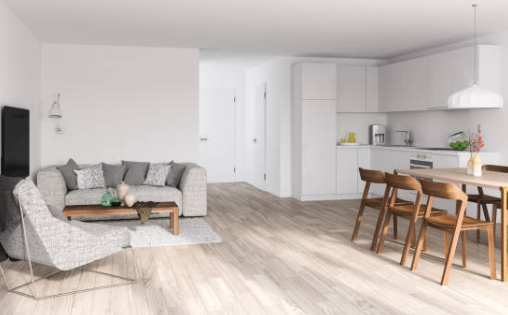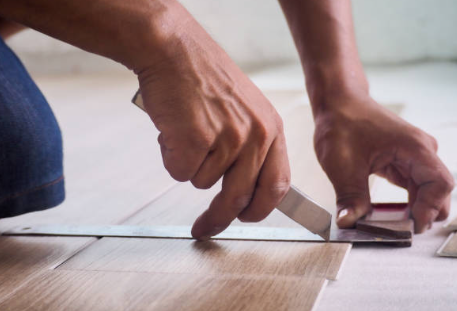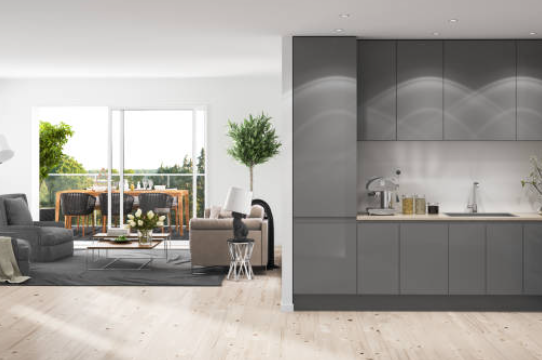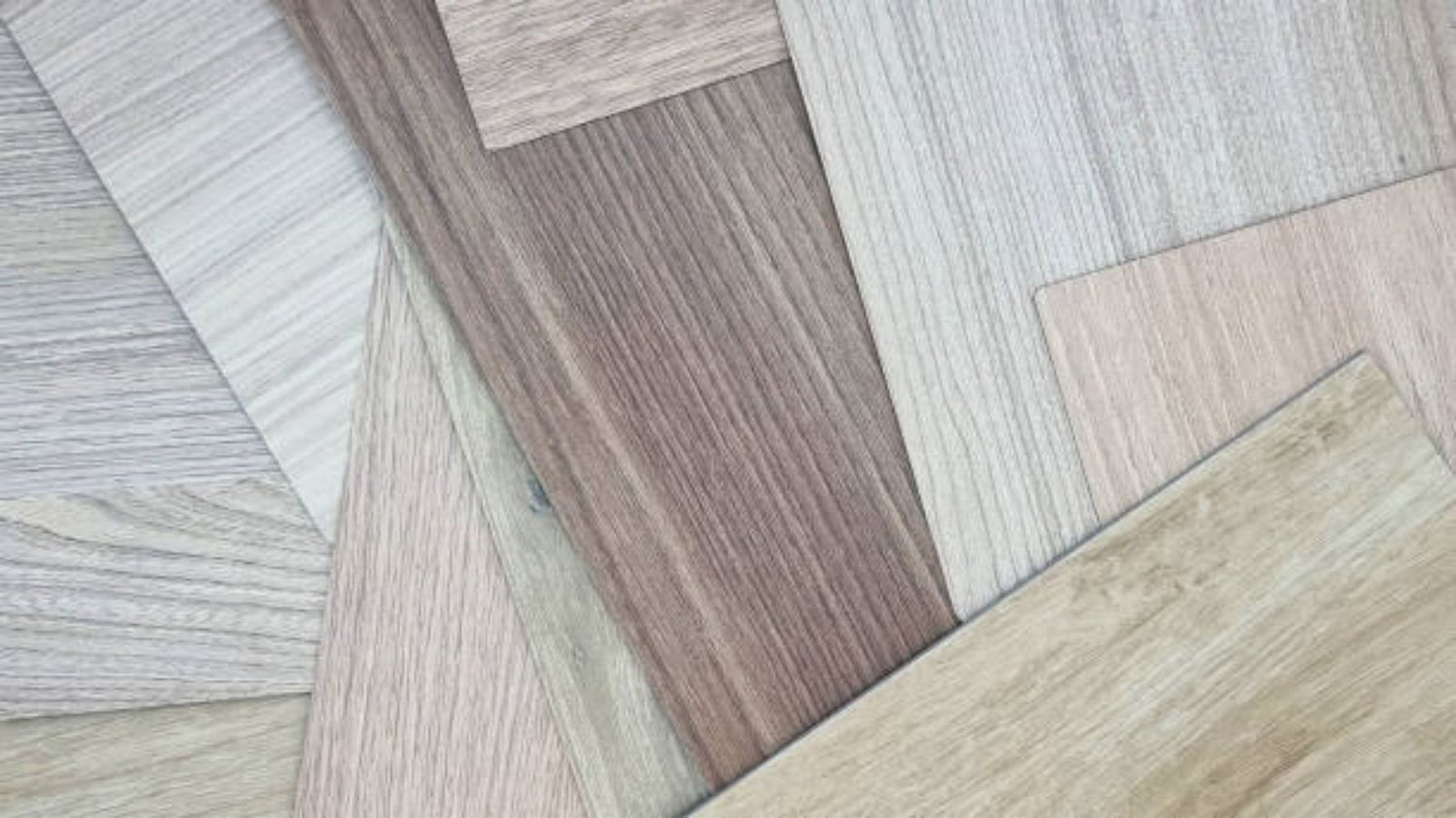The Ultimate Guide to Vinyl Flooring: Understanding the Craft and Material
In the realm of interior design and home renovation, finding the right flooring material is crucial. Vinyl flooring has surged in popularity for its versatility, durability, and cost-effectiveness. Yet, despite its common usage, many are unaware of vinyl's intricate manufacturing process and the unique properties that make it a standout product.
In this comprehensive guide, we'll take you on a deep-dive into everything vinyl, from its raw materials to the finished product, answering all the questions you may have as a homeowner, interior designer, or DIY enthusiast.
Understanding Vinyl Flooring

What Is Vinyl Flooring?
Vinyl flooring is a synthetic flooring material made of polyvinyl chloride, or PVC. It comes in planks (like laminate or wood), sheets (like linoleum), or tiles, and is designed to mimic natural materials like stone and wood. It's renowned for its water resistance, which makes it an ideal choice for spaces like kitchens and bathrooms. Vinyl flooring has been a game-changer, offering a mix of quality and cost that's hard to beat in residential and commercial settings.
Types of Vinyl Flooring
There are a few different types of vinyl flooring to choose from, each with its own benefits and applications:
- Luxury Vinyl Tile (LVT): A premium version of vinyl tiles that looks remarkably similar to natural materials like stone and wood.
- Engineered Vinyl Plank (EVP): A step up from traditional LVT, is 100% waterproof and can be installed in most spaces, including residential and commercial areas.
- Vinyl Sheet Flooring: A budget-friendly option that can be cut to fit any space and is available in a wide range of designs, including wooden, stone, and geometric styles.
-
Rigid Core Vinyl Plank (RVP): A major advancement in vinyl flooring technology, RVP has a solid, rigid core and is even more dimensionally stable than traditional LVT and EVP floors.
View More Flooring Options in Stock
The Manufacturing Process

The manufacturing process for vinyl flooring is more complex than many imagine. It's a fascinating blend of art and chemistry that results in a material with the strength, beauty, and potential we've come to expect from vinyl.
Step 1: Mixing the Ingredients
The raw materials for vinyl flooring are mixed together in a large industrial mixer. These ingredients typically include PVC resin, plasticizers, stabilizers, color pigments, and fillers. The mixture is heated to form a molten mass that is then passed through a die to form a sheet or other vinyl shapes.
Step 2: Creating the Wear Layer
The top layer of the vinyl flooring, called the wear layer, is critical to the product's durability. This layer is made using urethane, increasing its resistance to stains and UV damage. Manufacturers can adjust the thickness of the wear layer to match the product's intended use, with thicker layers for commercial or high-traffic areas and thinner layers for residential spaces.
Step 3: Incorporating the Design Layer
The design layer of vinyl flooring is where the magic happens. This layer is responsible for the vinyl's realistic look, with high-resolution photographs or digital images printed onto the vinyl sheet. Advanced printing technologies make it possible to replicate the look and texture of natural materials with stunning accuracy.
Step 4: Adding the Core Layer
Underneath the design layer is the core layer. This layer can be either solid vinyl or a composite of vinyl and a wood-plastic composite (WPC) for added stability. The core layer gives the vinyl floor its rigidity and dent resistance. In the case of rigid core vinyl, the core material will be a solid polymer core that brings superior impact protection.
Step 5: Backing and Resilience
The final layer is the backing, which is designed to add stability and offer additional sound insulation and comfort underfoot. The backing can be made of felt or foam, with innovative materials and techniques used to make it more resilient without sacrificing the product's overall durability.
The Environmental Aspect

Sustainability is a growing concern in the flooring industry, and vinyl is no exception. The Vinyl Sustainability Council and other industry groups are working to ensure that sustainability is at the forefront of vinyl flooring production. This includes using recycled and renewable materials, improving energy efficiency, and minimizing the release of harmful by-products.
Eco-Friendly Vinyl Options
Manufacturers are increasingly offering eco-friendly options for vinyl flooring. These might include:
- Bio-Based Vinyl Flooring: This type of vinyl contains renewable materials such as corn, coconut, and soybeans in place of some of the petroleum-based components.
- Recycled Vinyl Content: Some vinyl flooring contains recycled content, reducing waste and the need for additional raw materials.
-
Low-VOC Vinyl: Volatile organic compounds (VOCs) can be harmful to indoor air quality. Low-VOC vinyl flooring products are available to minimize these risks.
Caring for Your Vinyl Flooring

One of the reasons vinyl is so popular is its ease of maintenance. Here are some tips to keep your vinyl looking great for years to come.
Routine Cleaning
For everyday cleaning, sweep or vacuum your vinyl floors to remove dirt and debris. Follow your sweep with a mop using a recommended vinyl floor cleaner. Never use harsh chemicals or abrasive cleaners, as these can damage the surface.
Preventive Maintenance
Use doormats at entrances to prevent dirt from being tracked in. Fit furniture legs with protective pads to prevent scratches, and avoid dragging heavy items across your floor. Promptly wipe up spills to prevent staining.
Deep Cleaning
For a more thorough clean, use a damp mop with your vinyl cleaner. Avoid over-wetting the floor. Additionally, you can use a steam cleaner on vinyl flooring to remove stubborn stains, but be sure to use it according to the manufacturer's recommendations.
Restoring Shine
Over time, your vinyl floor may lose its shine. To restore it, use a manufacturer-recommended polish or sealant. Always follow the product instructions carefully.
Popular FAQs About Vinyl Flooring
Can vinyl flooring be installed over existing tile or hardwood?
Yes, in most cases. However, the condition of the existing floor is crucial. It should be flat and clean for the new vinyl to adhere properly.
Is vinyl flooring scratch resistant?
Vinyl flooring is highly resistant to scratches from normal wear and tear. However, sharp or heavy objects can still cause damage.
How long does vinyl flooring last?
With proper care, vinyl flooring can last upwards of 20 years.
Can vinyl flooring be used in commercial spaces?
Yes, many types of vinyl flooring are specifically designed for commercial use and can stand up to heavy traffic.
Is vinyl flooring safe for my family and pets?
Vinyl flooring is safe for families and pets. Modern vinyl flooring is phthalate-free and can be made with low-VOC materials.
Choosing the Right Vinyl Flooring for You
Picking the right vinyl flooring for your needs is a multi-faceted decision. Consider the room's function, the level of traffic, your budget, and your personal style. Working with a knowledgeable retailer or installer can help you make the right choice.
Style
Vinyl flooring comes in an array of styles, from classic hardwood and elegant stone to modern geometric patterns. Select a design that complements your interior design scheme.
Durability
Different types of vinyl flooring offer varying levels of durability. Thicker wear layers and quality core materials will provide better protection against wear and tear.
Waterproof Capabilities
If moisture is a concern, choose a vinyl floor that is explicitly labeled as waterproof, like EVP and RVP products.
Introducing Changzhou Bogao Decoration Materials
Changzhou Bogao Decoration Materials is a leading manufacturer of high-quality vinyl flooring. The company is known for its commitment to cutting-edge product design and eco-friendly production. Their vinyl flooring solutions provide a blend of aesthetics, functionality, and sustainability.
The Final Layout
Vinyl flooring is a modern marvel, crafted through a precise blend of science and art to meet the rigorous demands of both domestic and commercial settings. Whether it's the kitchen, bathroom, or the bustling floors of a retail outlet, vinyl's waterproof characteristics and ability to mimic natural materials make it an ideal choice. With awareness of its production process, eco-friendly options, and maintenance, choosing vinyl becomes not just a convenient option, but a well-informed design decision that stands the test of time.

